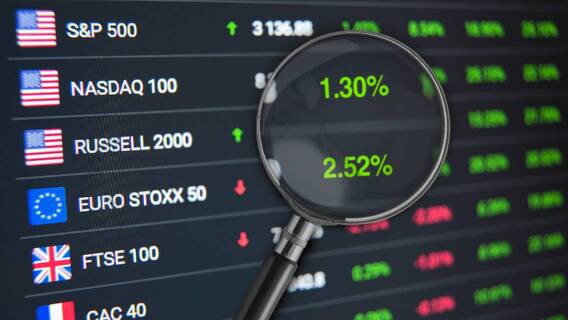It would seem that in today’s dour stock market, the best investment strategy is to hide in either cash or value stocks of companies with top-quality management, strong balance sheets and healthy free cash flow that trade at low valuations yet offer high and sustainable dividend yields. Most investors naturally think that this points them to consumer staples, utilities and perhaps a few healthcare or other non-cyclical companies. But these companies currently don’t offer much in the way of dividend yield, nor do they have the balance sheet strength or the low valuations that would otherwise make them appealing.
However, one company offers all of these desirable traits, yet investors have discarded its shares on the assumption that it is a highly cyclical company destined to see its earnings unravel as the global economy slides into a recession. Dow (DOW) is a surprising choice that checks all of the boxes for desirable traits. Value investors likely know the company well, but growth investors may not be paying attention to this discounted value stock.
[text_ad]
Dow has a long and storied history. Founded in 1897 by Herbert H. Dow in Midland, Michigan, the company expanded into chemicals and plastics, and rode to global prominence in the post-war global economic expansion. As its industries matured, the company merged with DuPont to create DowDuPont in 2017, then split into three companies in 2019 based on product type. The new Dow is the world’s largest producer of ethylene and polyethylene, the most widely used plastics. As a commodity company, its basic strategy is to leverage its massive global scale and innovate as much as possible to expand its profit margins, while continuously reducing its costs and debt to provide long-term financial strength and flexibility.
Dow’s business operates in three segments. Packaging and Specialty Plastics (50% of sales) converts raw materials like natural gas into commodity and related plastics, with arguably the world’s largest and most geographically diverse reach in the industry. The Industrial Intermediates and Infrastructure segment (30%) produces a broad range of chemicals including solvents and lubricants used across the industrial economy. Products from the Performance Materials and Coatings (20%) segment are used by its commercial customers to improve their paints, coatings, adhesives, consumer products and other goods. All of these products are key ingredients in the global economy – they cannot be replaced or substituted. Dow is a global company, with nearly two-thirds of its $56 billion in sales produced from outside the United States and Canada.
What Makes Dow (DOW) Such an Attractive Value Stock?
Dow’s management has proven itself to be a capable steward of shareholder value. Led by CEO Jim Fitterling, the company is performing better in nearly all metrics compared to its position at its 2019 spin-off. The board of directors includes Richard Davis (a highly disciplined and no-nonsense banking executive) and other executives with strong oversight experience.
The company’s debt load of $13.7 billion is a modest 1.3x estimated EBITDA, or cash operating earnings. Even when compared to the pandemic-weakened earnings in 2020, leverage is only 2.5x EBITDA – a readily manageable and still modest amount of debt. And, less than $1 billion in debt matures within the next four years, offering considerable financial flexibility to weather any downturn. Illustrating its commitment to financial strength, Dow has trimmed its debt significantly from $19.8 billion at its split-up. Further bolstering its finances, Dow has $2.7 billion of cash. Credit rating agencies look favorably upon the company’s condition, rewarding it with an investment-grade rating.
Also helping: Dow benefits from rising interest rates. Its $3 billion in net pension liabilities (down from $8 billion at the spin-off date) will likely decline to zero as its future obligations are discounted more heavily. This is an underappreciated source of value to investors.
Dow generates strong free cash flow. Over the past year, the company generated $7.7 billion of free cash flow, more than enough to fund its $2 billion in dividends. Even in a less-supportive economic environment, in which Dow generates perhaps $5 billion in free cash flow (like in 2020), the company’s dividend payments are readily covered. We have little doubt that with Dow’s commitment to its shareholders, it would taper its cash outflows to sustain its dividend.
The shares currently trade at about 4.1x estimated 2022 EBITDA of about $10.5 billion. Even when using the recession-minded 2023 EBITDA estimate of $9.0 billion, the 4.8x multiple is a wide discount to Dow’s fair value. Many investors focus on earnings multiples: here, the 7.5x multiple on next year’s estimated earnings similarly reflects a stock that is out of favor with recession-worried investors.
At the current price, Dow shares offer a highly attractive 6.1% dividend yield. We believe this dividend is readily sustainable in all but a deep and enduring global recession and offers an additional and rare source of value to investors.
The shares of this value stock, of course, are not risk-free. Major risks include a collapse of oil prices (Dow’s profits are often correlated with oil prices), a deep and enduring global recession, and excessive capacity increases by competitors. But we see these risks as unlikely to become reality. And, Dow’s leadership appears fully capable of successfully navigating the company through these conditions if they occur.
At Cabot Undervalued Stocks Advisorand theCabot Turnaround Letter, we help investors navigate the equity markets using a common-sense value-oriented approach that emphasizes out-of-favor stocks of companies with real value. Let us help you sort through the market to find them.
Disclosure: The author personally owns shares of Dow (DOW).
[author_ad]

